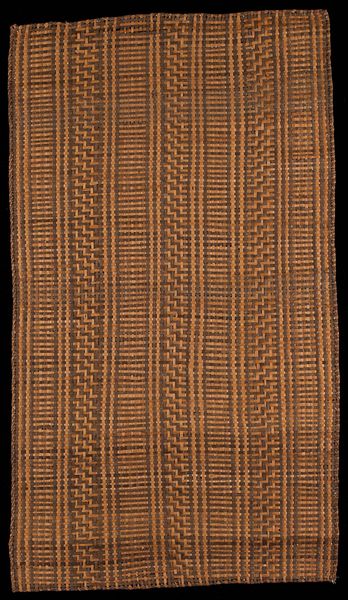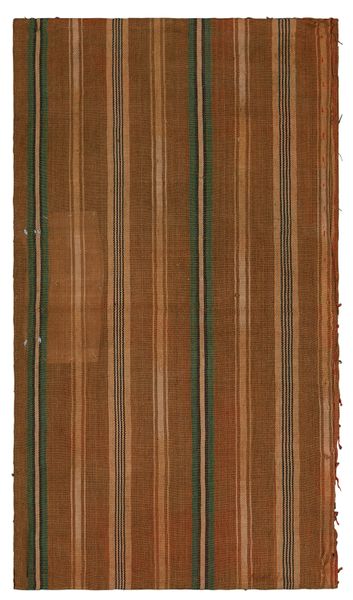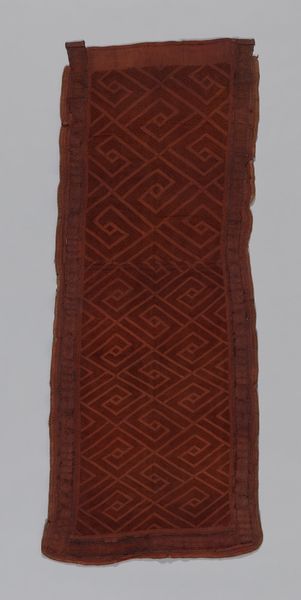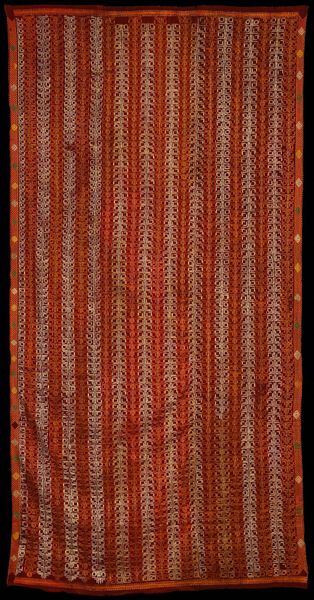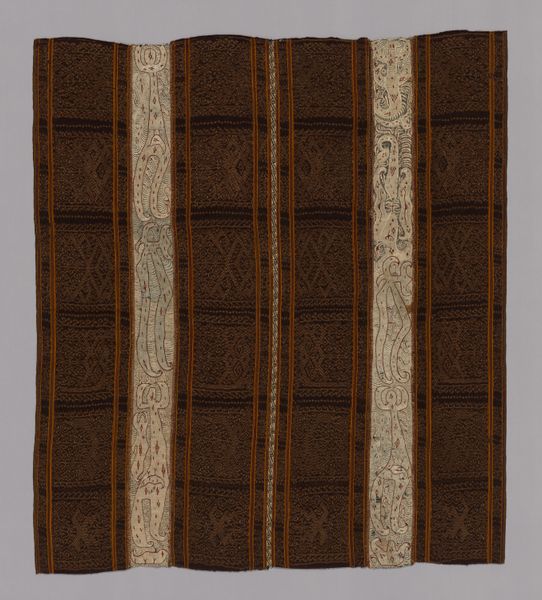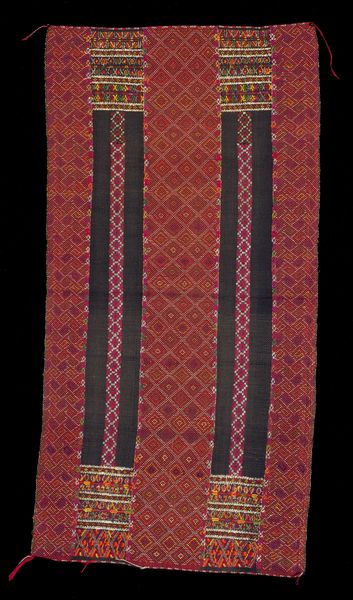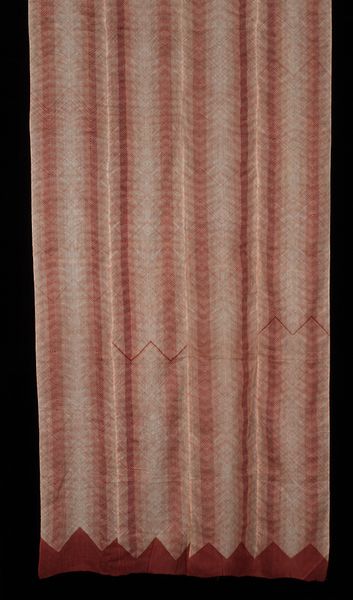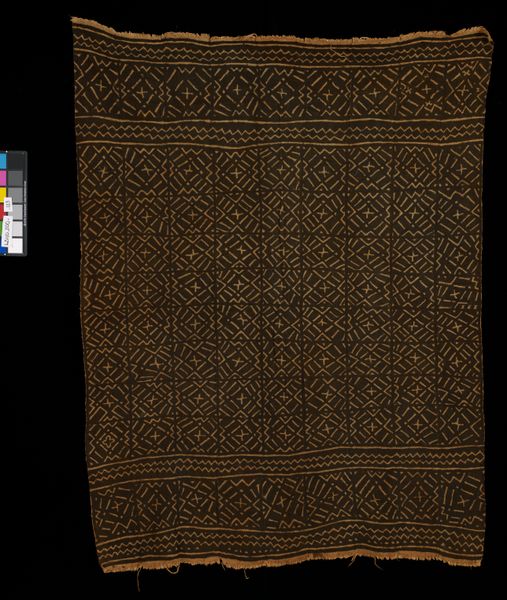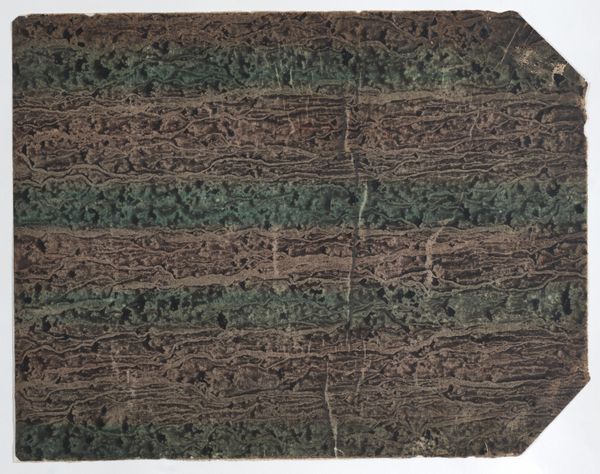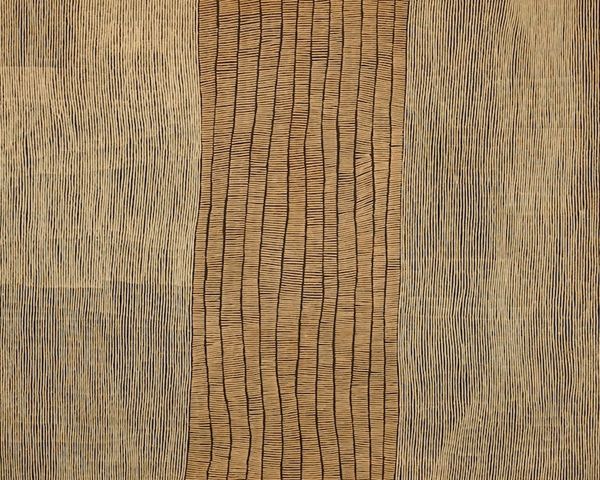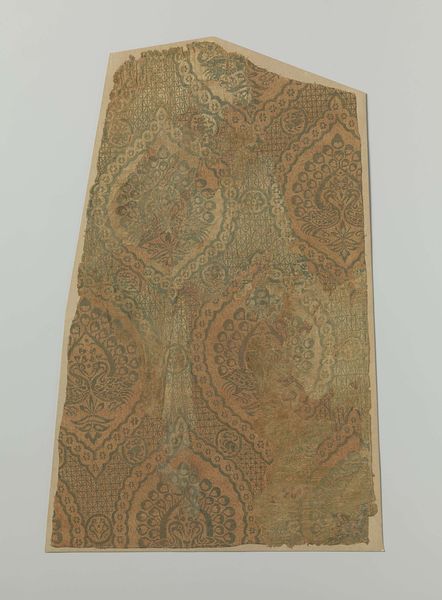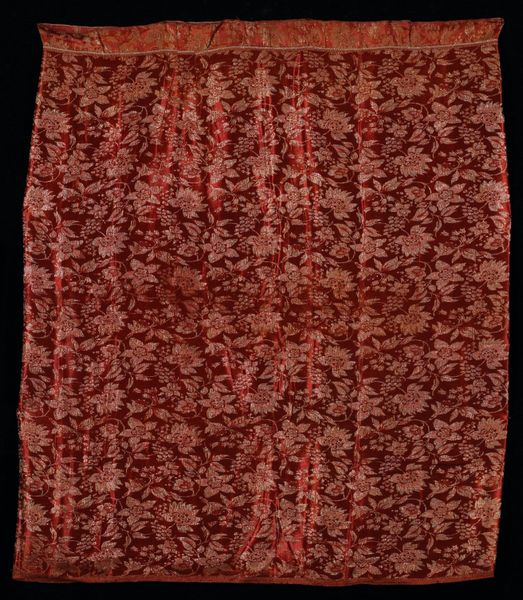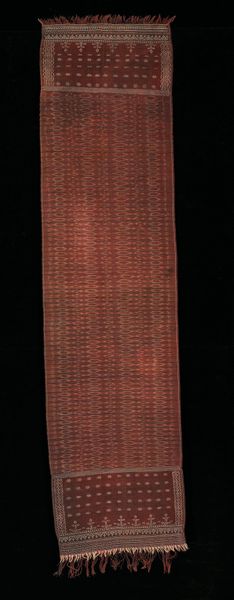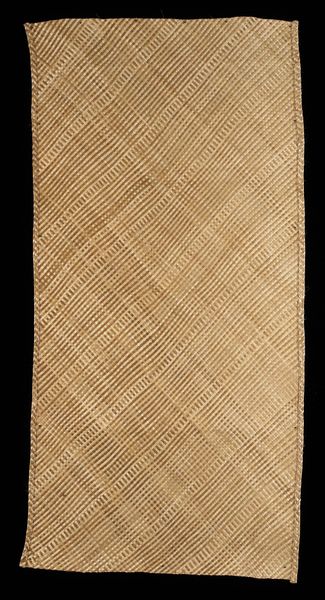
textile
#
african-art
#
textile
Dimensions: 26 7/8 x 17 3/8 in. (68.26 x 44.13 cm)
Copyright: Public Domain
Editor: This is a bark cloth panel by the Mbuti people; the date is unknown. The artwork, made with textiles, is on display at the Minneapolis Institute of Art. It has some compelling geometric patterns. I'm interested in knowing more – how do you interpret this work? Curator: This piece compels us to think about artmaking as intrinsically linked to survival and community. Bark cloth production is deeply connected to the Mbuti's forest environment, a relationship threatened by deforestation and societal changes. Does seeing this object shift your perspective on what constitutes "art," considering its practical function and the cultural context from which it emerges? Editor: That’s a great point, that it’s tied to the environment and survival. I guess I think of art more as separate, not something as practical as clothing. So what do the patterns mean in terms of this function you mentioned? Curator: Exactly! It pushes us to challenge those assumptions. The geometric patterns aren't just decorative; they may encode knowledge, stories, or social structures significant to the Mbuti. Can we see the act of creation as a form of resistance, a way of preserving cultural identity in the face of external pressures? How do these patterns both conceal and reveal cultural meaning? Editor: Wow, so the act of creating the piece itself is part of retaining their identity. And the patterns almost work like a code! I guess I had not considered that, and that’s important to understanding this piece. Curator: It also encourages considering power dynamics when appreciating art from different cultural contexts. The display of this object in a Western museum inevitably shapes its interpretation, inviting us to ask, "Whose voices are amplified and whose are silenced?" This challenges us to approach such objects with respect for its community, with consideration to ethical representation, as part of a larger story. Editor: I hadn't really thought of all of the elements beyond the aesthetic to consider – it’s amazing to look at a piece with a deeper understanding of culture. Thank you. Curator: Absolutely. Engaging with art like this challenges us to consider the work, artist, environment and purpose of the artwork. It’s not just what’s on display, but who we are as viewers too!
Comments
No comments
Be the first to comment and join the conversation on the ultimate creative platform.
